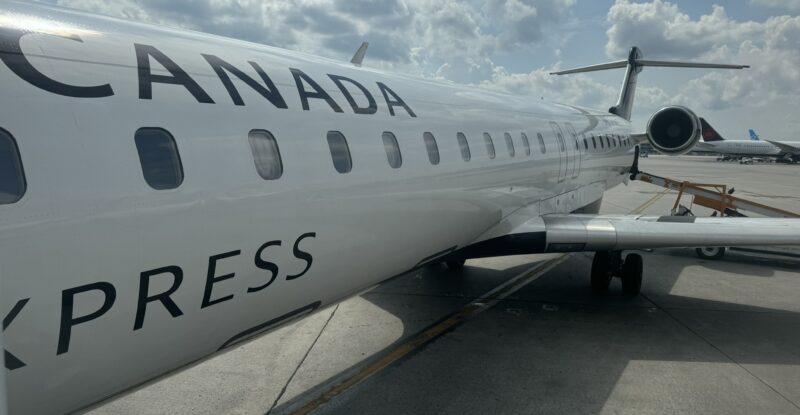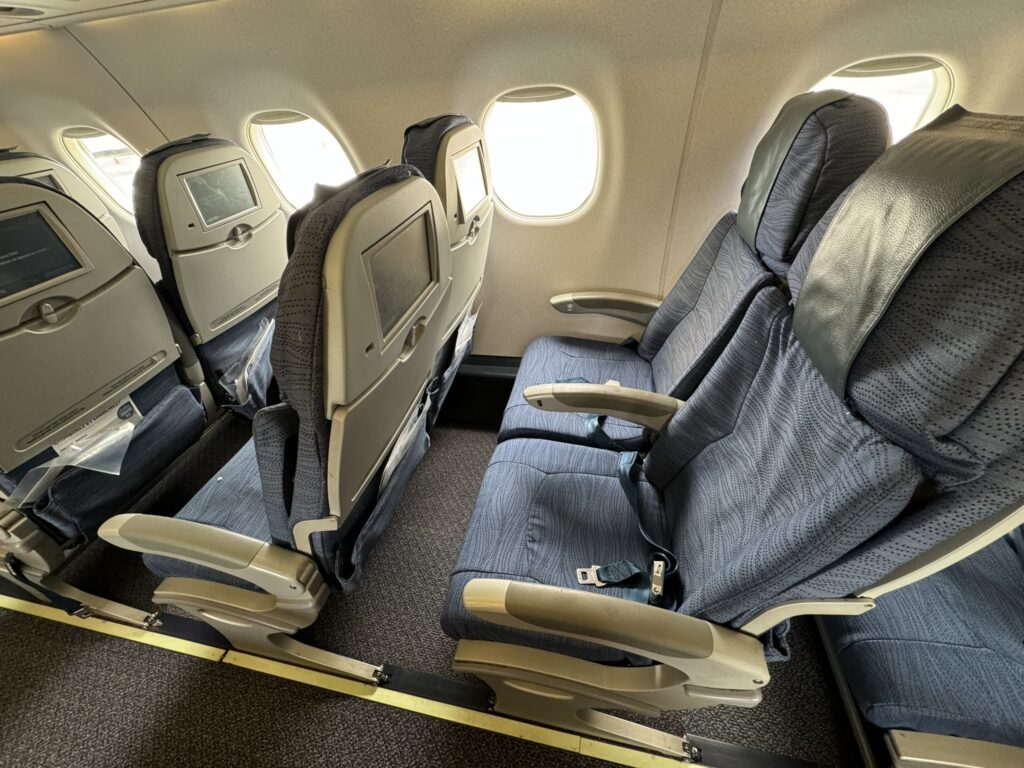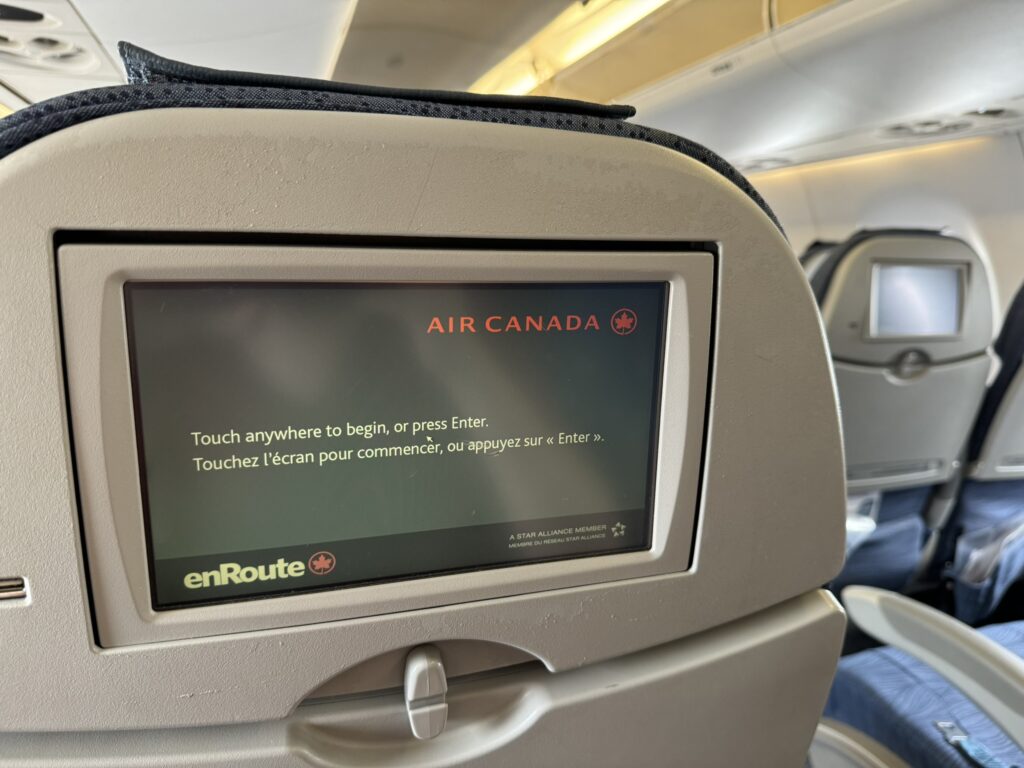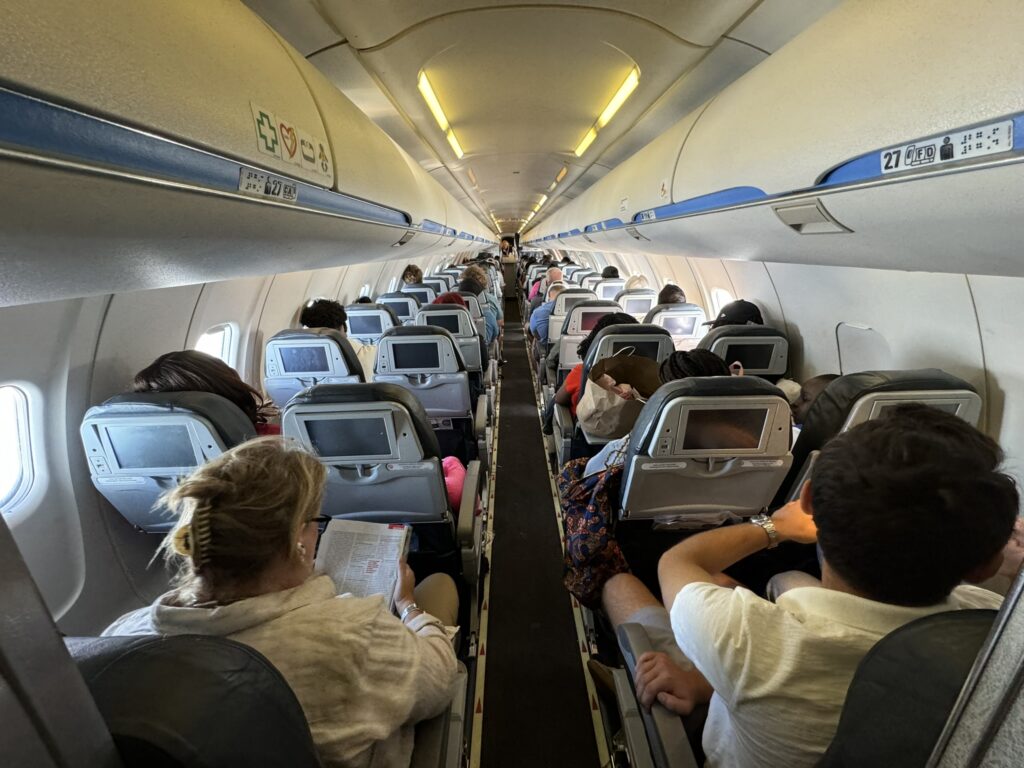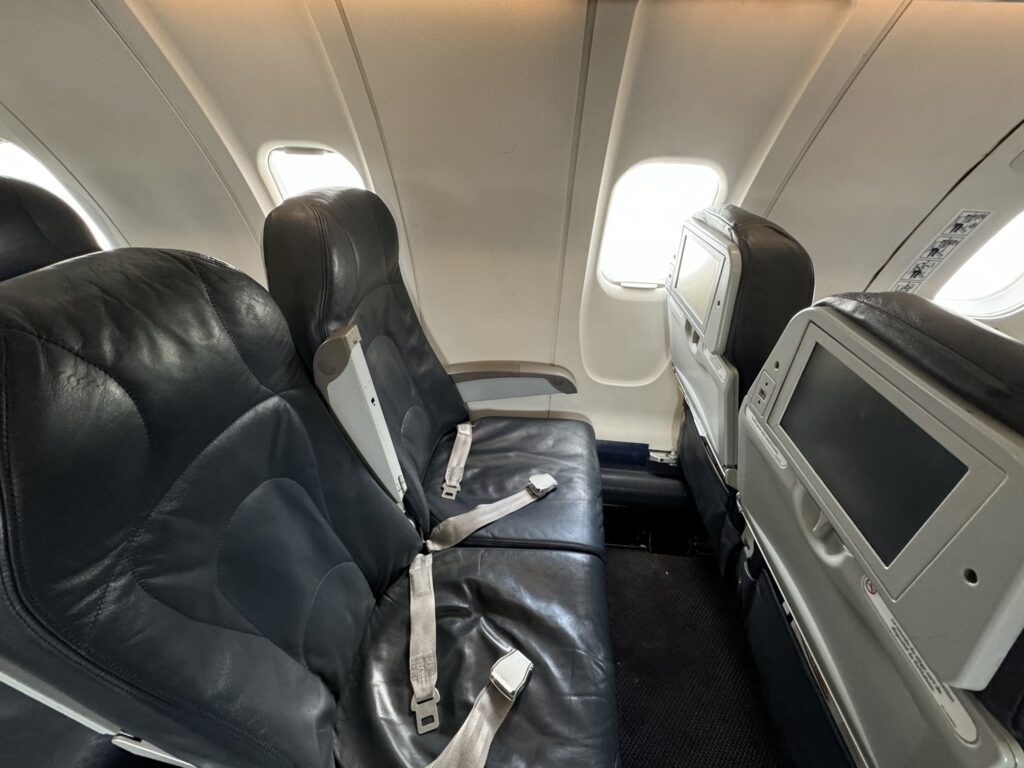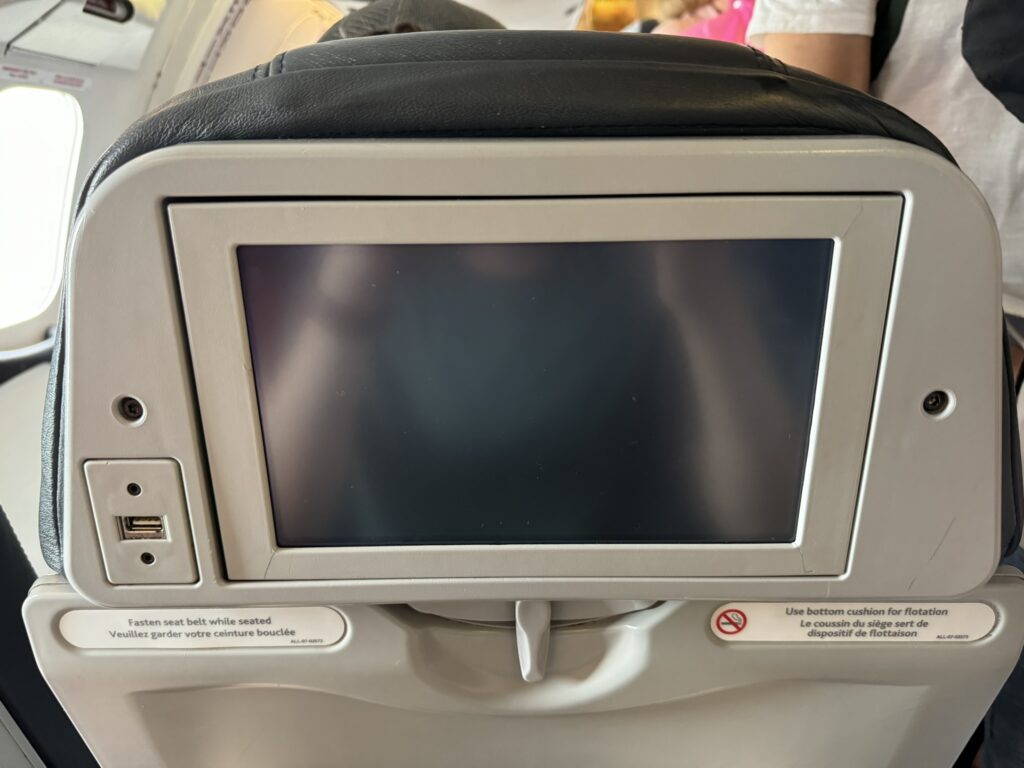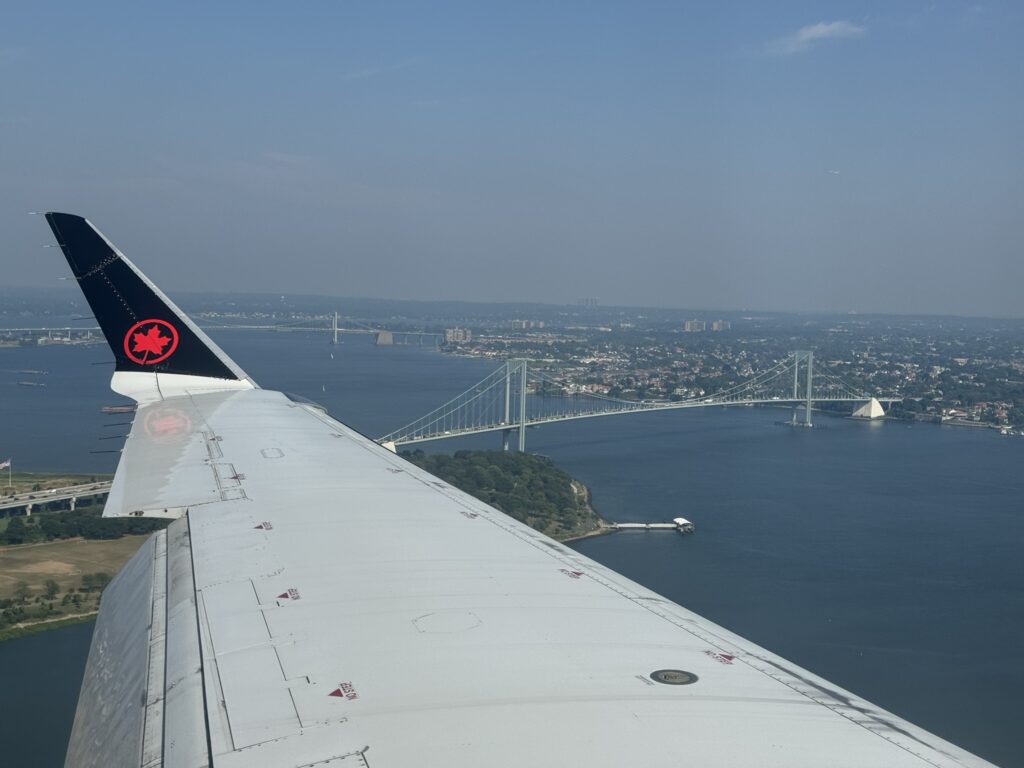 One year ago, I enjoyed comparing the passenger experience (PaxEx) aboard Air Canada’s aged Embraer E175s with its brand new Airbus A220s, observing that the 20-year-old E175 was still holding up well. This year, however, on the same New York-Montreal summer weekend trip, Air Canada’s once futuristic regional jet cabins have really started to show their age.
One year ago, I enjoyed comparing the passenger experience (PaxEx) aboard Air Canada’s aged Embraer E175s with its brand new Airbus A220s, observing that the 20-year-old E175 was still holding up well. This year, however, on the same New York-Montreal summer weekend trip, Air Canada’s once futuristic regional jet cabins have really started to show their age.
While I originally intended to copy last year’s format — but instead compare Air Canada’s CRJ900 with the 737 MAX 8 — a delay to the inbound 737 flight to New York LaGuardia prompted me to switch to an earlier E175 flight which had in fact been delayed to my original departure time.
Score one for flexible change policies, at least. I ended up getting to Montreal even earlier than originally scheduled.
The same exact E175 as last year was assigned to my LaGuardia-Montreal flight. While Air Canada has since announced plans to completely refurbish its regional jet fleet, the retrofit program has yet to kick into high gear. In the year since my previous flight, the seats onboard have become a bit more worn down than I would have expected.
While the E175 provides ample and much appreciated seat width, the seat cushions are in bad shape. They’re so worn that the seat isn’t very comfortable.
Just like last year, the legacy Thales inflight entertainment system did its best to serve up content and charge my phone with its USB-A port. Also like last year, the legacy Intelsat (formerly Gogo) air-to-ground Wi-Fi system did not function at all. At least it was a quick flight, something not to be taken for granted this summer.
The return journey from Montreal was operated by a Jazz CRJ900, an aircraft I always try to avoid in favor of the Embraer E-Jet. With less overhead bin capacity than the E175, boarding was stressful before it even began.
Though she tried hard, the gate agent was unable to convince all passengers that their bags were too big for the regional jet’s small bins. But after some shuffling on board, everything got to where it needed to go. This scrum reinforced the need for larger bins on even smaller aircraft.
Air Canada’s CRJ900 fleet is a bit of a hodgepodge right now, with at least three distinct versions flying.
There’s the legacy Air Canada Express interior, an updated version with the so-called Atmosphere interior, and a third set of aircraft recently taken over from Delta Air Lines.
I found myself on the legacy interior, but with what’s known as a “dark aircraft.” Although the old seatback entertainment system was still in place, it was not functional for the entire flight.
With IFE switched off, the USB charging port functionality was alas also disabled. Compounding matters, the Wi-Fi system on this flight was again not functioning correctly. I could only stay connected for a few seconds here and there.
While my phone could see the SSID and connect to it briefly, it would always disconnect after a few seconds. This meant that I also couldn’t watch any of the free streaming movies and TV shows that Air Canada has made available as an alternative to the elderly seatback system.
I’m now ‘zero for three’ on Air Canada regional jet flights using the old ATG connectivity system and portal. Air Canada’s transition of these aircraft to Intelsat’s multi-orbit IFC system can’t come fast enough!
At the beginning of this busy summer season, Air Canada made an abrupt change to its food and beverage plan on Canadian and transborder flights. Possibly in a bid to compete with Porter Airlines, Air Canada now offers all passengers free snacks, beer, and wine at least through the end of 2024.
I was impressed to see that Air Canada stocked four types of beer on such a short regional flight, as it was a nice little treat for a late afternoon flight home. The Twigz “craft pretzels” snack was also good enough that I could have eaten a whole bucket of them!
Overall, Air Canada’s regional jet experience is still pretty strong compared to its American competitors, though the airline may have allowed its legacy interiors to hang on just a little too long.
I’ll miss the seatback screens when they’re removed in the refurbishment program, though.
Related Articles:
- Air Canada taps Intelsat for 2Ku connectivity on MAXs, ESA on RJs
- A lot to like on Porter Airlines’ E2 YYZ-YVR flight
- Air Canada cranks up cool factor with nose to tail A321/A320 refurb
- Air Canada’s E175 regional jets stand out despite their age
- Strong IFE and biz meal buy up make Air Canada 787 economy shine
All images credited to the author, Jason Rabinowitz, who was traveling on a complimentary staff ticket issued by an employee.




